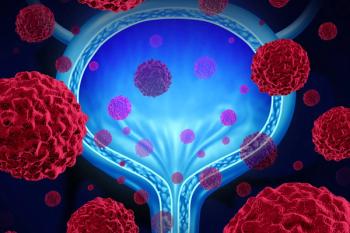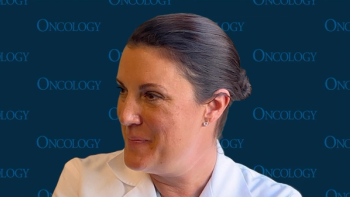
Miami Breast Cancer Conference® Abstracts Supplement
- 41st Annual Miami Breast Cancer Conference® - Abstracts
- Volume 38
- Issue 4
- Pages: 10-11
7 Real-World Efficacy and Adverse Events of Neoadjuvant Immunotherapy in Early-Stage Triple-Negative Breast Cancer Patients: A Multicenter Experience
Introduction
Pembrolizumab combined with neoadjuvant chemotherapy (NACT) is the current standard of care in early-stage, triple-negative breast cancer (TNBC) based on the KEYNOTE-522 study, which demonstrated improvements in both pathologic complete response (pCR) and event-free survival (EFS). We investigated real-world clinical outcomes and toxicity of
this regimen.
Methods
We conducted a retrospective, multicenter observational study among patients with TNBC treated with NACT and pembrolizumab at Roswell Park Comprehensive Cancer Center, Medical College of Wisconsin, and Fox Chase Cancer Center from July 2021 to June 2023. Demographic and clinicopathological variables, immune-related adverse effects (irAEs), and clinical outcomes were collected. Patients were divided into 2 cohorts: pCR and non-pCR. Multivariable logistic regressions were used to evaluate the association between response and demographic/clinical characteristics while controlling for relevant confounding factors. Analyses were performed in RStudio (v4.2.3) at a significance level
of ≤ .05.
Results
A total of 104 patients were included in the analysis. The study population consisted of all female patients. The median age was 53.2 years (IQR, 42.7-63.7 years). In all, 59.4% were White individuals, and 23.6% were patients who were Black; 35.5% were obese (body mass index [BMI] ≥ 30 kg/m2), 56.1% had stage II disease, and 34.6% had stage III disease. Of the 85 patients who underwent surgery, 54 patients (63.5%) attained pCR. The median number of pembrolizumab doses was 7. The number of doses of neoadjuvant pembrolizumab was not associated with pCR (OR, 1.1; P = .7). Patients in the pCR group were younger than those in the non-pCR group (52.3 vs 59.2 years; OR,1.05; P = .007) at the time of surgery. The median OS was 24.41 months, and the median OS follow-up was 6.6 months. Higher BMI was associated with worse recurrence-free survival (OR, 1.11; 95% Cl, 1.00-1.24; P = .05). A total of 42.3% (44/104) of patients experienced irAEs of any grade, and 34.6% had grade 3 or higher irAEs. The most common irAEs were transaminitis (25%), rash (20%), pneumonitis (12%), hypothyroidism (9%), hyperthyroidism (9%), adrenal insufficiency (7%), and infusion reactions (16%). Higher BMI was associated with increased incidence of any-grade irAEs in multivariate analysis (OR, 1.07; 95% Cl, 0.99-1.16; P = .035) but not grade 3 or higher irAEs compared with patients with normal BMI.
Conclusion
Our study showed a similar pCR rate (63.5%) to KEYNOTE-522 (64.8%) but a higher incidence of irAEs in the real-world population. Younger age was associated with higher probability of pCR, and obesity was associated with increased incidence of irAEs.
Articles in this issue
Newsletter
Stay up to date on recent advances in the multidisciplinary approach to cancer.


















































































